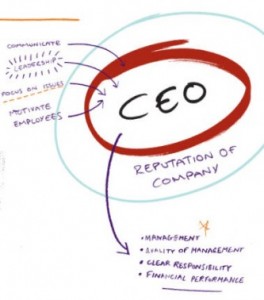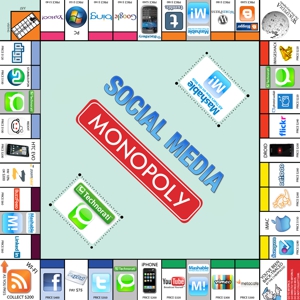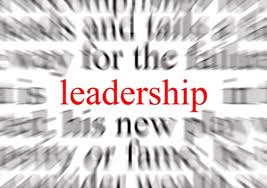This post originally ran on TalentCulture and is being shared on this site with the permission of TalentCulture. The contents herein will be part of the discussion on #TChat (8-10-2011). TChat is a Twitter chat that takes place every Wednesday from 7-8 PM EST. Click Here to view the original post.
For anyone that can remember the time that a latest and greatest technology emerged to bring business to the next level, we can say that it is profoundly interesting the impact that these advancements actually make on companies.
Some can probably remember the days before email and before cell phones when letters were either typed by hand and traveling sales people had to actually stop at a pay phone to verify an appointment or call home to check in.
More than ever management need to be watching technology trends and making sure their organization is equipped.
Times are changing, the proliferation of technology is moving faster than ever, and businesses are the ones that are benefiting. At least they should be!
There are many ways that technology is leading to better business practices. There are systems for managing customers, accounting, communications, and operations. We are connected 24×7 if we so choose and we are able to reach all ends of the world instantly via the click of a button.
As a proponent of successful businesses being comprised of people that use technology and not just technology alone, I believe that nothing in business may be affected by emerging technology than Human Resources. Recruiting, talent development, and employee retention are all seeing a significant boost based upon what advances in technology have to offer.
Two of the specific technologies that are revolutionizing talent and professional development more than any are IP (Internet Protocol) Based Communications such as Skype, VoIP, and Video Conferencing as well as the rapid emergence of Social Media (LinkedIn, Twitter, Facebook, Google+).
Let’s take a look across the scope of Talent Management and explore how the aforementioned technologies as well as a few others are facilitating success for so many companies.
Recruiting New Talent
It used to be a newspaper ad or a sign in the window. Your audience was narrow and your options were thin. It was difficult to reach the best talent leaving positions to be filled by less than ideal candidates.
- Communications – With the ability to inexpensively bring employees in via the network either by voice, video, or perhaps a combination such as Webex, employees can now be sourced from and potentially located anywhere. Productivity tools allow companies to hire the BEST candidate from any location and get them integrated with the team whether they are near or far.
- Social Media – Depending on the specifics of the job, talent can be sought through massive global social networks such as Linked In, Facebook, and Twitter. These networks allow a help wanted ad to reach millions of users who may or may not be actively seeking employment. Recruiting and searching for talent has also never been easier due to profiles, recommendations, and other affiliations that can be easily found online using Social Media. As an aside, Social Media has also helped many companies decide who not to hire.
Talent Development
It used to be a quarterly or yearly trip to headquarters for remote employees and or classroom learning for those already in town. Coordinating training was intensive and time consuming. With technology advances now learning can be routine, meaningful, and completed on demand.
- Communications – Similar to the recruiting process the continued education of employees can be accomplished using technology tools. Webinars, Distance Learning, and E-Learning platforms all pave the way for continued education for employees regardless of where they are located. On top of being able to create content and have employees learn and develop on demand, it also helps companies to utilize global resources to provide the education.
- Social Media – Intranets have existed for companies for some time however they were rarely used all that effectively. With professional usage of social platforms employees can learn from one another as well as competitors by following, reading, and embracing the information that is widely available. Content is created and shared regularly and it allows company talent to keep their finger on the pulse of the industry and any important changes within.
Employee Retention
It has been discussed to no end the impact that turnover has on a business. Whether near or far from headquarters, companies need to focus on how they can keep people satisfied, growing, and engaged. In the past when companies would hire remote employees they oft felt isolated and/or disconnected from the organization. With emails and phone calls perhaps being the only regular communication eventually the employee may choose to be with an organization where they feel more involved. Technology has changed that, and if used correctly it can assist the organization with retention allowing it to focus on strategy with key employees rather than on replacing them.
- Communications – Hearing a voice on the line is fine, it is practical, but like long distance relationships in life, eye contact means a lot. With offerings from Free (Skype) to immersive telepresence costing millions ( Cisco, Polycom) and everything in between companies and their employees can now sit across the table and make eye contact with the click of a mouse. Now as easy as a phone call, video can be accomplished and the quality is really good. Video is not only beneficial for the employee, but also for the company as it forces focus and regular collaboration (We all know how easy it can be to multi-task on the phone). Another item that is critical to many employees is flexibility, with tools that allow productivity anywhere and everywhere, (pending signal) companies can be more flexible with their resources allowing both parties to benefit.
- Social Media – Social is a medium for even smaller companies to build their brand and create an identity for their employees. This effort can often aid in the development of company community and in some cases successful out of work friendships. While peoples out of work activities generally don’t bare much success for the organization, happy people tend to generate more productivity. People that feel connected to their brand and feel that they are a part of something special tend to work harder and drive greater results. Social Media is a growing vehicle for accomplishing this.
For as long as business has been business, companies have only been as good as their people. In almost all cases where a great product or service fails it isn’t the product or service at all, rather it is those behind it. With emerging communication technology and proper social media integration you have the chance to be ahead of the curve.
Now technology of course isn’t all free, and choosing the technologies that are best for your organization may take some work, however, it is time well spent. You can all but assume that the competition are looking at all the options too, some are integrating, some are watching and waiting, and you can only hope that a few are oblivious. Nevertheless, technology will continue to advance making companies faster, smarter, and of course full of better talent.
The question is, are you embracing it, or are you hoping to ride to prosperity on the tired old horse that got you to where you are today.
IMAGE VIA hank grebe










